Review: Samsung Galaxy S9+
Mar 8, 2018, 8:00 AM by Eric M. Zeman
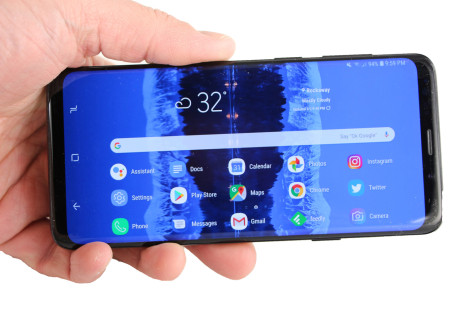

Samsung's flagship handset is here and it's a curvaceous, complex piece of consumer electronics. The Galaxy S9+ seemingly has it all: the good looks, the high IQ, and the killer skill set that sets it atop the Android pedestal. Can anything waylay the latest from Samsung? Find out in Phone Scoop's in-depth review of the Galaxy S9+.
Hardware
Is It Your Type?
Some people simply have to own the latest and greatest thing, no matter how great that thing actually may be. The Samsung Galaxy S9+ is an update to last year's S8+ and makes just the right number of improvements, with a keen focus on photography, to call it a wholly better phone. The S9+ is for those who want the best of the best no matter the cost.
Body
Samsung has fully adopted Apple's tick-tock rhythm for updating its flagship Galaxy S series handsets. The S6 and S7 were nearly identical from a design perspective, and so are the S8 and S9. As I said in my hands-on, where last year's S8+ was a generational leap forward, this year's S9+ takes a good idea and increments it to be even better.
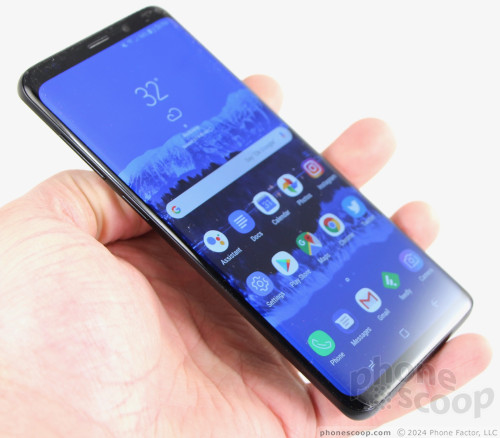
Only the most observant will be able to spot the differences between the S8+ and the S9+ hardware, especially from the front. The S9+ has a thin metal frame sandwiched between two curved pieces of glass. Samsung gave the metal a new matte finish that I really like. The frame wraps all the way around the outer edge and is only a couple of millimeters thick along the sides; it swells up at the top and bottom. The frame is colored to match the black, blue, and lavender colors offered this year.
The uniformity of the shape, the thin profile, and the luscious materials all contribute in making the S9+ a gorgeous piece of hardware, even if it hasn't changed much from its predecessor.
There's no question the S9+ is a big phone. It stands 6.22 inches tall and 2.91 inches wide. Thanks to the 18:9 display and razor-thin side bezels, it's more than twice as tall as it is wide. Each piece of Gorilla Glass is 20% thicker on the S9+ when compared to the S8+, which Samsung claims gives them added strength. The thicker glass makes for a slightly thicker and heavier phone than the S8+. The S9+ definitely feels weighty.
It can be difficult to reach the top of the screen with your thumb; you might find yourself juggling the S9+ in your grasp a bit. If you have medium-sized or large hands, using the S9+ shouldn't be problematic, but if you have small hands you might want to consider the more compact S9 instead. I found the phone fit into pockets pretty well.
Hand Fit
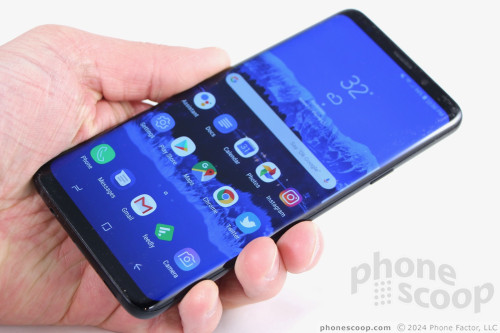
I should point out that the S9+ is slightly smaller and rounder than the Note8. While the difference is small on paper, it makes a surprisingly huge difference in person. The Note8 is taller and has sharper corners, making it relatively unwieldy. If the Note8 was too much phone for you, the S9+ may be a better option.
The S9+ is one of the finest phones I've handled. Samsung picked high-quality glass and aluminum and mated the differing materials perfectly. The seams between metal and glass are nonexistent. Samsung has fully mastered its ability to curve glass and create sleek, sumptuous smartphones.
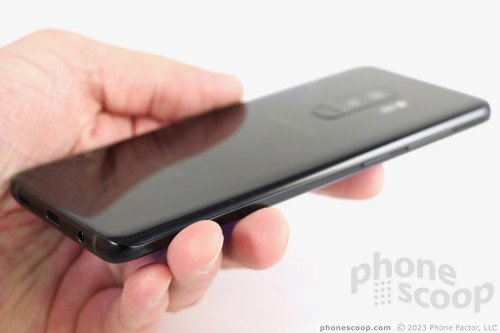
The whole point of Samsung's Infinity Display is to give the phone the appearance of being "all screen". Samsung accomplishes this better than most. Samsung has essentially eliminated the side bezels thanks to the curved screen. Bezels above and below the display are as thin as it gets (at least without resorting to a "notch"). The earpiece grille, iris reader, and user-facing camera are all but invisible on our black review unit, but more easily spotted on the colored variants. With no interruptions to the glass, the front face is entirely smooth.
Samsung made slight improvements to the buttons and controls located around the outer edge of the phone. The layout is the same as on the S8+, but all the keys now have thicker profiles and are easier to find and use. A dedicated hardware key on the left edge launches Samsung's personal assistant, Bixby. The volume toggle is above the Bixby key. It's only about an inch long. The lock button is on the S9+'s right edge. All of these buttons have excellent profiles, and perfect travel and feedback.
Samsung tucked the nano SIM and microSD memory card tray in the phone's top edge. A SIM tool pops the tray out easily. The USB-C port is on the bottom, as is the 3.5mm headphone jack.
Bottom Edge
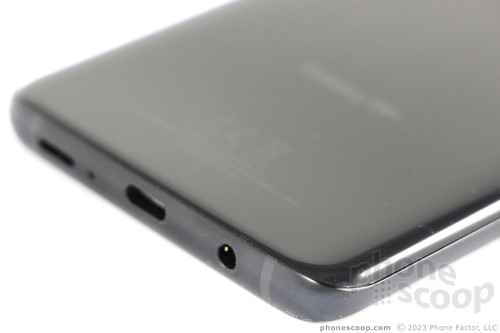
The S9+ is rated IP68 for protection against water, dust, etc. Technically, it can sit in 1.5 meters (~4.5 feet) of water for up to 30 minutes with no worries. Waterproofing is a table-stakes feature at this level. I tested the phone in a bathtub and found it no worse the wear for its bath.
As noted, both the front and rear glass panels are made from thicker Gorilla Glass 5, but we discovered that doesn't mean much. It may be tougher, but it's still glass. We dropped our naked review unit just once, from about waist height, and the rear glass shattered. Put a case on this phone, please.
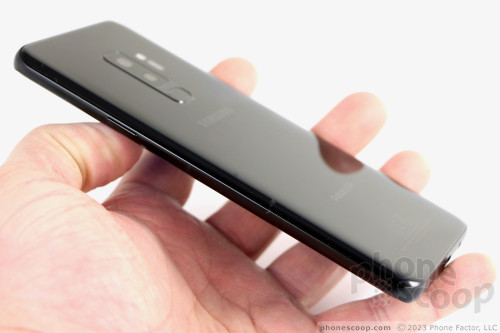
The S9+'s rear panel is nearly all uninterrupted glass. Like most glass handsets, you'll find yourself wiping oily grime off the back constantly. Fingerprints are most noticeable on the black model, and much less so on the blue and lavender.
Thank goodness Samsung took all the complaints about the fingerprint reader on the S8+ to heart and corrected its mistake. The fingerprint reader is now exactly where you expect to find it: right in the middle, below the camera. This is a huge improvement. On a day-to-day basis, the fingerprint reader of the S9+ is far easier to find and use than that of the S8+. A heart rate monitor also adorns the rear panel.
Fingerprint Reader
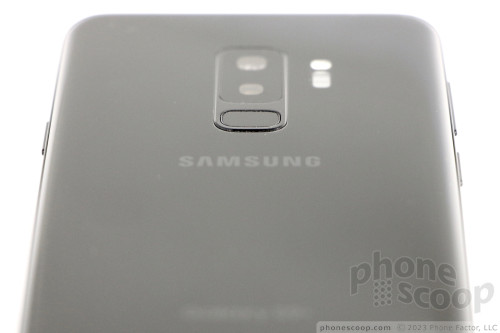
The rear cannot be removed; the battery is inaccessible.
The Galaxy S9+ is not a radical departure from its predecessor, but it takes the right steps forward. The rearranged fingerprint reader is the single biggest improvement, making the phone a more usable device. It's just as attractive and just as desirable, if not more so.
Screen
Samsung did not change the screen at all from last year's phone. The S9+'s display measures 6.2 inches and it maintains the 18.5:9 aspect ratio. A year ago, 18:9 screens looked a bit weird, but now it's mainstream.
The display is eye-popping. Samsung gave the S9+ the newest version of its Super AMOLED technology. I was impressed with sharpness, color, and brightness across the board. The full resolution (Quad HD+) with HDR is outstanding when it comes to all types of content. I tested some HDR movies from Netflix and it looked phenomenal on the S9+. The display's color leans toward over-saturation, which is typical for Samsung's OLED panels. Brightness is outstanding. Viewing angles are very good, but not the absolute best I've seen. The screen shifted blue and dropped brightness just a little bit when tilted side to side.
You can control the resolution. Samsung allows S9+ owners to choose between three resolutions: 1,480 by 720 pixels, 2,220 by 1080 pixels, and the display's full 2,960 by 1,440 pixels. Out of the box, the phone is set to the middle option, or Full HD+. The middle option is only slightly less amazing than the phone's full resolution. The benefit of choosing a lower resolution is better battery life.
The full resolution (Quad HD+) is outstanding when it comes to virtual reality content. The size, shape, and resolution of the S9+ display also help with running two apps at the same time in split-screen mode.
You can control the color and/or tone. There are four major settings, including adaptive display, AMOLED cinema, AMOLED photo, and basic. Each mode tweaks color range, saturation, and sharpness to match the environment and/or activity at hand. The screen also includes a blue light filter for late-night viewing.
It's a fantastic screen.
Signal
I tested the unlocked Galaxy S9+ on AT&T, T-Mobile, and Verizon in and around New York City. The phone improves LTE support to Cat 18, which allows for speeds up to 1.2 Gbps (in theoretical perfect conditions). Moreover, the S9+ supports T-Mobile's Band 66 and Band 71 service. (It is possible that carrier-branded models may not have all the bands enabled.)
The phone delivers excellent wireless performance. The S9+ always remained connected to AT&T, T-Mobile, and Verizon, whether the signal was strong or weak. The phone delivered blazing fast speeds, allowing me to upload photos and videos to Instagram no matter where I took it. Streaming high-quality music from Spotify and high-definition video from YouTube over LTE didn't present any challenges for the S9+. Data never disappointed while I reviewed the phone. It is among the fastest I've tested. I saw the fastest raw speed from T-Mobile, but the phone performed more consistently on Verizon.
The S9+ was able to connect all calls on the first dial. It maintained calls over long distances at highway speeds, and didn't drop any calls while I tested it.
The cellular radio does its job well. This is what I expect from a flagship device in 2018.
Sound
Samsung did a great job crafting a top voice phone in the S9+. Phone calls sounded above average when compared to handsets I've reviewed recently. The earpiece pushes out clear, loud sound with a warm timbre. I had no trouble hearing calls when in cars, on city streets, at home, or in busy coffee shops. People I spoke to through the phone said I sounded great.
I was able to make HD Voice calls on AT&T, and the quality of those calls was absolutely superb. Seriously, they were the best I've heard.
The speakerphone is quite impressive. During my tests I found I could keep the volume set midway most of the time. You may need to turn it up in the car. Importantly, the S9+ doesn't suffer from distortion when cranked all the way up.
I'm happy to report that the S9+ adopts stereo speakers. Similar to the iPhone X, the S9+ uses the earpiece and bottom-firing speaker to create stereo sound. The earpiece produces more treble tones, while the bottom speaker produces more bass tones. Samsung did a fine job ensuring that the effect is relatively even, all things considered, when you hold the phone sideways. I was very pleased with the quality when listening to music and/or watching video.
Ringers and alerts were consistently loud enough to get my attention, and the vibrate function always made me take notice. The S9+ lets you can control the intensity of the vibrate alert as well as select from a dozen different alert patterns.
Battery
The S9+ carries over the same 3,500mAh battery from last year's S8+. The larger battery is a key reason to consider this plus version over the smaller S9. Over a week of testing, I found the S9+ consistently handled a full day of heavy use. I pushed it like crazy on several days, taking lots of pictures and shooting video while constantly checking email, uploading photos to Instagram and staying on top of my RSS feeds. I nearly always had a solid cushion of 25% battery left at the end of the day. Under normal use, with brightness and resolution set to the middle levels, most people should easily cruise through a day with plenty of power to spare.
The S9+ includes Samsung's varied power-consumption modes: off, mid, max. Each mode can be customized to a certain degree (tweak brightness, CPU output, notifications, etc.).
Last, the S9+ supports Quick Charge and rapid wireless charging. When plugged into the included wired charger, I found the S9+ charged from 40% to 100% in 60 minutes. Charging via Samsung's rapid wireless charging pad took perhaps 15 minutes longer than the wired option (that's quite good, as wireless charging goes.)
Bluetooth, GPS, NFC, WiFi
The S9+ includes Bluetooth 5.0+LE. Phones have included Bluetooth 5 for the better part of a year and there still aren't that many accessories that take full advantage of 5.0. Oh well. The S9+ worked perfectly with all of the Bluetooth devices I tested, such as headsets, speakers, and my car. The S9+'s software made pairing/connecting a mostly painless process.
Phone calls sent to mono headsets sounded excellent, while calls routed to my car's hands-free system were quite good. Music pushed to stereo headphones sounded very, very good thanks to aptX HD support.
The phone's GPS radio worked perfectly with Google Maps and other location-enabled apps. Maps was able to pinpoint me in a blink of an eye, and location was as accurate as 10 feet. The S9+ makes for a fine navigation device.
The S9+ ships with Samsung Pay, which is one of many apps that can take advantage of the NFC radio. The phone's NFC radio is compatible with the new Google Pay app, and also works when pairing with NFC-equipped Bluetooth accessories. (Samsung Pay also works with MST — magnetic strip — which is available here as well.)
The phone's dual-band WiFi made for incredibly quick downloads.
Software
Security / Lock Screen
Samsung doesn't quite have Apple's FaceID, but it has the next-best thing: Intelligent Scan. This two-in-one tool combines face detection and iris scanning to improve accuracy and security even in low or bright light. In order to use it, you first need to scan your face and then register your irises. The phone performs both actions to recognize the owner and unlock the phone. The way it works, you'll use either Intelligent Scan or Fingerprint ID as your primary unlock tool, with a PIN, pattern, or password as a backup.
Intelligent Scan is not quite as seamless or as quick as Face ID. You have to hold the phone more squarely in front of your face to get it to properly see you — particularly your irises. The iris scanner doesn't like glasses, so the bespectacled among you may not get much mileage from Intelligent Scan. I like that you can set Intelligent Scan to fully unlock the phone, bypass the lock screen, and go straight to the home screen if you want. This is available under advanced options. Intelligent Scan does work quickly and often enough that it can be a good option if your fingers aren't available to swipe the fingerprint reader.
Speaking of which, the fingerprint reader — blessedly positioned right where it should be — is a cinch to train and use. Samsung now asks S9+ owners to swipe their finger down the reader to register prints and it works much faster during initial setup than pressing and lifting and pressing and lifting as it does on most other phones. If you use the fingerprint reader as your primary method for unlocking the phone, you'll find it is fast and accurate.
The lock screen is a decent space. The S9+ offers Samsung's version of the Always On display concept. The clock, date, battery percentage, and notifications are always visible. Notifications can range from simple badges to the full text of incoming messages. Samsung offers plenty of ways to tweak the Always On display, including different clock styles and swipeable widgets.
The easiest way to turn the screen on is to press the screen lock button on the right side of the phone. This brings up your wallpaper, full notifications, access to the Quick Settings menu, and lock screen shortcuts. You can also wake the display by pushing the software home button — a little square that sits at the bottom of the display. It's always visible, part of the Always On display. A simple tap won't do it; you need to hard-press or double-press the button.
Only two shortcuts are available on the lock screen and you can configure which they are.
Home Screens
Samsung hasn't changed up its home screen experience much in the last year. The Galaxy S9+ ships with Android 8 Oreo and the latest build of Samsung's user interface skin. It offers more tools that most other phones when it comes to tweaking the software experience. The closest competitor I can think of is the Huawei Mate 10 Pro.
When you first boot the phone you'll discover there's no app drawer button. Instead, swipe the home screen up or down and the app drawer will appear. Samsung's solution is elegant in its simplicity, though you can add the app drawer button back if you want to.
The app drawer can be arranged however you wish, though it is organized alphabetically by default. Samsung allows you to hide unwanted apps.
The Quick Settings panel has a clean, easy-to-use design that I like. It is a cinch to customize. The main settings menu also uses clean colors, sharp fonts, and a bright background. It's arranged more or less how Google arranges the settings on its own phones, but Samsung has added tons of options for controlling the phone's behavior.
For example, the phone offers access to Samsung's themes. Only one is pre-installed, but you can download more. Some themes are free, some cost a few dollars. All of them will change your entire visual experience, from the wallpapers to the icons to the fonts and colors.
You can spend forever tweaking small things, such as the number of apps that appear on home screen panels, how big the fonts are, and which fonts appear.
One big addition is Samsung Pass. It's sort of like 1Password for the Galaxy S9+. You'll need to sign into or create a Samsung account. Once you do, you can save your usernames and passwords for apps and web sites and protect them with Intelligent Scan or fingerprint ID. When you encounter a new form to fill out, Samsung Pass will ask if you want to use the stored credentials. Simply scan your face or swipe your fingerprint and the phone does the rest. No more typing out passwords all over the internet. I like this.
The S9+ supports Samsung's edge screen. Swipe a tab that appears on the right edge of the screen to access People Edge, Apps Edge, and others. These customizable, vertical banners are useful to some degree. Like the Note8, the S9+ supports App Pairs in the edge screen. With App Pairs, you can pair together any two apps (email and browser, contacts and messaging, YouTube and Twitter, etc.) and launch them in separate multitasking windows.
The S9+ includes Easy Mode, which is meant for people who may be new to smartphones, or for those who have bad eyesight.
The phone supports a variety of hand gestures. For example, you can capture a screenshot by swiping the edge of your hand across the display, or call the displayed contact by bringing the phone to your ear.
Other cool things: one-handed mode for easier control of the phone with just one hand, finger sensor gestures for opening or closing apps with the fingerprint reader, dual messenger for using two separate accounts in the same app (e.g., Facebook Messenger), and adjustable touch screen sensitivity.
The Galaxy S9+ ships with the Qualcomm Snapdragon 845 with a respectable 6 GB of RAM. This is Qualcomm's top-of-the-line processor. It takes a big jump over last year's 835 due to expanded AI, GPU, ISP, and other factors. I have not tested a faster phone than this. Every app launches quickly, the user interface runs smoothly, and screen transitions are seamless. I tested games, virtual reality, and other apps that put the processor to work and the phone never felt overtaxed or out of breath. It's a fast, fast phone.
Camera
Samsung's camera app is now even more like the iPhone's. To launch it, double press the screen lock button. This is always the fastest way. You can also tap the lock screen or home screen shortcuts. The camera pops open instantly.
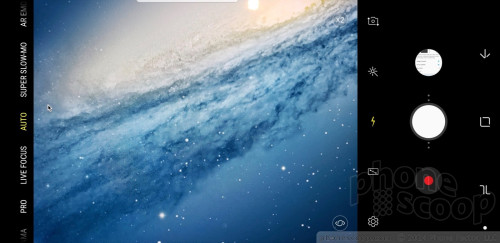
A list of shooting modes appears on the left side of the viewfinder, while the shutter buttons populate the space to the right of the viewfinder. You swipe back and forth to access the various shooting modes, just as you would on the iPhone (dudes, even the colors are the same). Swipe up and down to switch to the selfie camera. The camera has separate picture and video buttons, which make it easy to snap photos when shooting video.
As far as the shooting modes are concerned, the S9+ includes food, panorama, pro, live focus, auto, super slow-mo, AR emoji, and hyperlapse. I love that you can actually edit the order these appear. Further, you can activate normal slow-mo and sports modes in the settings if you want.
Super slow-mo and AR emoji are the new shooting modes this year, so we'll talk about those in depth. (We've seen the rest on older Samsung phones, and they continue to work well.)
First, super slow-motion. The S9+ is able to capture slow motion at 960 frames per second, allowing you to capture stunning, epic slow-motion video. (It accomplishes this by adding DRAM directly to the imaging sensor, a trick Sony pulled on its flagship device last year.) Using the tool is a total pain in the butt. There are two ways to shoot super slow-mo: manual and auto. Using the manual mode, you start shooting video and then tap the slow-mo button when you want to specifically capture at the high frame rate. You can only shoot a few seconds of super slow-mo at a time. The auto setting is different. It draws a box on the screen as you start recording. If/when something in the box actually moves, only then will the S9+ shoot super slow-motion. Getting the phone to recognize motion in that box was an exercise in futility. It never captured what I wanted it to, even when there was clear motion in the box. It takes practice to properly learn how to use this tool.
Slow-Mo Manual
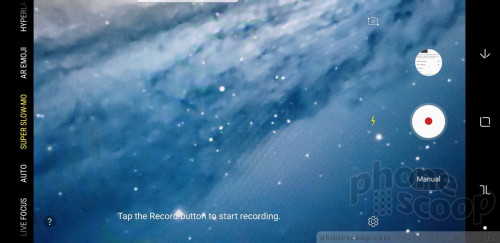
Slow-Mo Auto
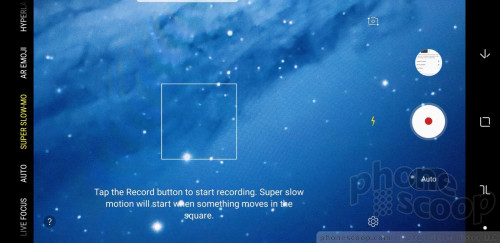
The AR Emoji tool is another feature borrowed from Apple (cough, Animoji, cough). There are several ways to have fun with the AR Emoji tool. First, capturing others. Turn on the AR Emoji mode and point the S9+ at your friends. You can see what they'd look like as a rabbit, a kitten, a dog, a devil, a cartoon character, and with sunglasses, hats, frames, time/date stamps, emoji, and more. It's a fun way to dress up your friends. Then there's the custom AR Emoji. Tap the "create my emoji" tool and you can create an emoji of yourself. The app records your face and then sticks it onto an animated person. You can change your hair color/style, outfit, and select accessories, such as glasses. Once you've finished the AR emoji, the S9+ then creates 18 GIFs using your emoji as the star. These make for personal reaction GIFs (when you heart something, when you're mad, etc.) you can send via text message. Samsung says it will add more options, stickers, and personalities over time.
AR Emoji
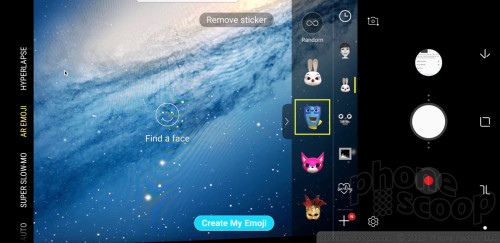
Just as a reminder, the Live Focus tool is your bokeh/portrait shooting mode. This tool uses both cameras to help create blurred background effects. What's neat is you can adjust the level of background blur both before and after you take the picture. The tool provides a live preview of the potential results as you adjust the strength of the blur effect. It does take some practice to use, but delivers fun results. I particularly like that you can change the focal point after the fact.
Thanks to the second camera, the S9+ supports 2x optical zoom. There's a simple "X2" button in the viewfinder. Tap it to automatically jump in by a factor of two. (Which is actually simply switching between the two lenses.) You can still use the slider tool to adjust zoom, and it will stick to the main lens until it reaches 1.9x, then switch over to the telephoto lens for the rest.
The pro mode lets you tweak most of the camera's core settings, including exposure, white balance, autofocus, color, shutter speed (up to 10 seconds), and ISO. The controls are a little small, which makes them difficult to use. Perhaps most importantly, the pro mode lets you manually switch the camera between its F/1.5 and F/2.4 apertures. This gives you even more creative control over your photos.
Pro Mode
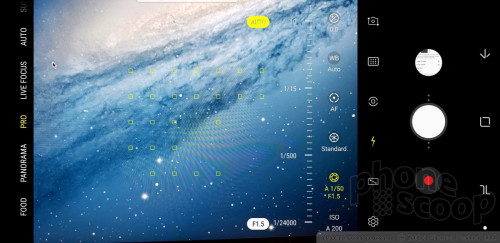
Four modes are available in the selfie camera. The first is called selfie focus and is basically for portrait-style shots where you are in focus and the background is blurred. You need to hold the phone at arm's length to get this to work well. The regular selfie tool is for standard pictures with everything in focus. The selfie camera includes a user-facing AR Emoji mode so you can apply stickers to yourself. You can even sample (and buy!) makeup from select vendors. Last, a wide-angle selfie lets you squeeze lots of people into the frame.
Last, the camera includes Bixby Vision and thankfully it has been improved. Once enabled, the Bixby Vision shooting mode turns on Bixby's artificial intelligence to help you figure out what you're looking at. Bixby Vision can read/translate text in real time, read QR/barcodes, and help you shop with location-based suggestions. The live translation is neat, particularly since it doesn't require you to shoot a picture first. Just aim and translate. It works really well. It can handle up to 33 languages automatically.
The camera performs incredibly well. It's fast through and through.
Photos/Video
Samsung did some really interesting things with the S9 and S9+ this year. To start, the main camera has a 12-megapixel sensor with variable aperture. Phone makers have spent the last few years dialing aperture down as low as possible. This is great for low-light photography, but not always the best for daytime shooting. This is why the S9+ has two aperture settings: F/1.5 and F/2.4. Most of the time the S9+ shoots at F/2.4, but it will automatically switch to F/1.5 at night or when its dark.
The S9+ differentiates itself from the S9 primarily thanks to a second 12-megapixel camera at F/2.4 with a 2x telephoto lens. This means the S9+ is better at zoom.
There's no question the S9+ takes amazing pictures. I was able to capture great detail in and around Barcelona in bright and dark environments. Focus is generally excellent and white balance was nearly always spot-on. Exposure will vary. Because you can manually set the aperture, this impacts exposure, depth of field, and detail.
Leaving the phone in the auto setting generally turned out great results. When tested alongside a Note8, Mate 10 Pro, and Pixel 2 XL, I think the S9+ edged out the competition by a hair. The F/1.5 aperture goes a long way to brighten up exposures that might otherwise be too muddy, though this comes at the expensive of detail and grain.
The telephoto lens helps a lot. It is best put to use in bright spaces, and is much improved when compared to the 2x shooter on the Note8. This gives the S9+ a huge advantage over the S9.
Your results with the advanced modes will vary a bit and take some time to master.
Notably, the super slow-motion tool requires lots of light. Shooting indoors delivers nothing but grainy results. Further, it's worth pointing out that super slow-mo is only able to capture 0.2 seconds of motion that is then played back over 6 seconds at 720p. Let's just say the results look better on your smartphone than they do anywhere else.
The S9+ has a powerful 8-megapixel user-facing camera with screen-based flash, auto-focus, and an f/1.7 aperture of its own. The selfie cam does a really, really good job. As noted earlier, you can make use of the AR Emoji tool when using the selfie cam, as well as the wide-angle mode. The selfie cam does an excellent job.
"Selfie Focus"

On the video front, the S9+ captures resolutions up to 4K. The best features — HDR capture, video effects, tracking autofocus — aren't available when shooting in 4K or 2K. The S9+'s video camera shoots fantastic video. Video is sharp, rich in color, and properly exposed. The HDR video capture mode is excellent. The tracking autofocus function is particularly helpful if your subject is moving all over the place.
The Galaxy S9+ is clearly a market leader when it comes to photography and videography.
Wrap-Up
The Galaxy S9+ is a heck of a phone. I wish Samsung had taken more steps to distinguish it visually from its predecessor, but the improvements it did make bring the phone close to perfection.

I'm practically in love with the curvaceous glass and thin metal frame that define the phone's shape. The lustrous materials and tight build make the phone a high-end piece of art that happens to contain some of the most advanced technology available to consumers. The screen is to die for, thanks to its sharp and colorful reproductions of photo and video content. Moreover, it delivers excellent voice quality, superb data performance, and fantastic battery life.
The Android 8 Oreo operating system and Samsung software are powerful, if overwhelming. Options for customization can make you dizzy in the head, but the reward is a highly personal experience. Standouts include the new Intelligent Scan security feature and Samsung Pass for managing passwords.
Samsung improved the experience of using the camera, added a ton of fun features, and made sure the S9+ delivers some of the best results available from a modern handset. The camera and functions such as super slow-mo and AR emoji are crowd-pleasing in all the right ways.
Who should buy this phone? Everyone who can afford it. However, that may not be the most practical advice. If you're using a Galaxy S6 or S7 (or other two-year-old phone that you own), it's time to upgrade immediately. If you're on a Galaxy S8 or S8+, there's less reason to jump to the S9+. Only the camera features really set it apart from its forebears, and even then may not be worth the cost for most.
At $840, the S9+ is not cheap. Be sure you can get a good value for your trade. If you have the means, the S9+ is the way.
Comments
Review summary: "Of all the phones this is definitely one of them"


















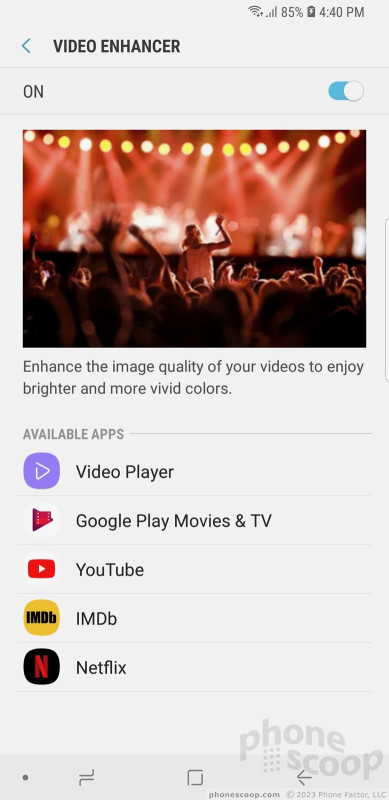




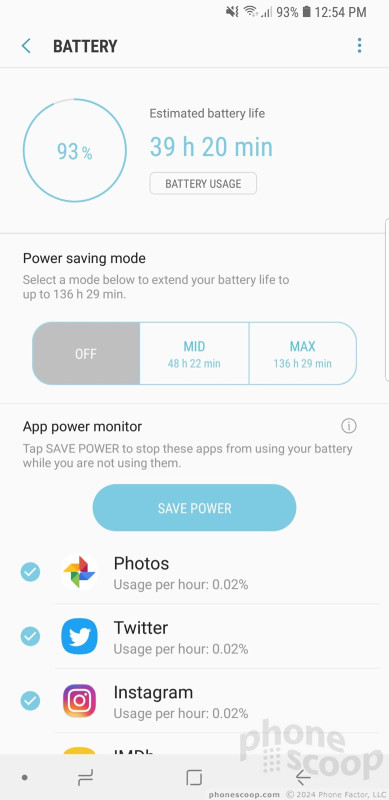






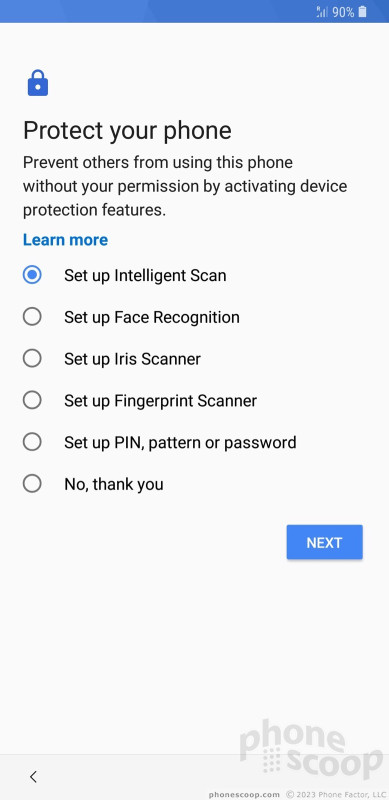










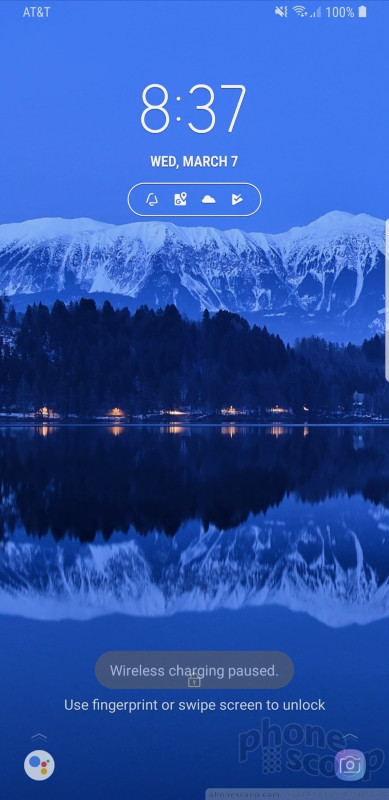





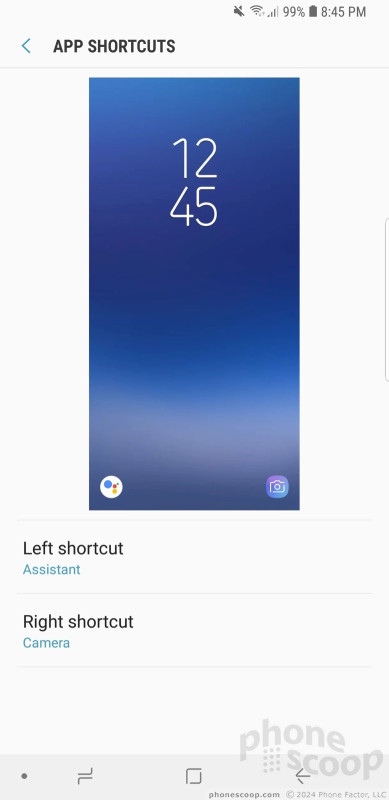

















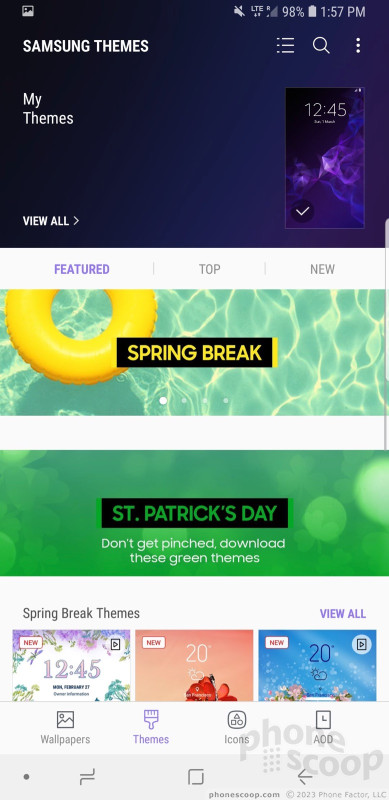









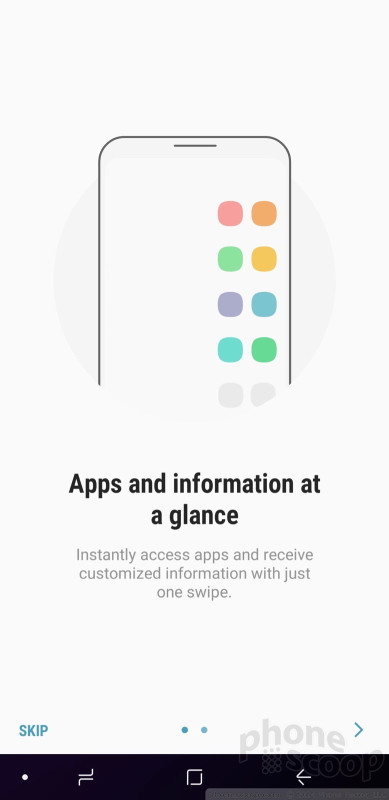








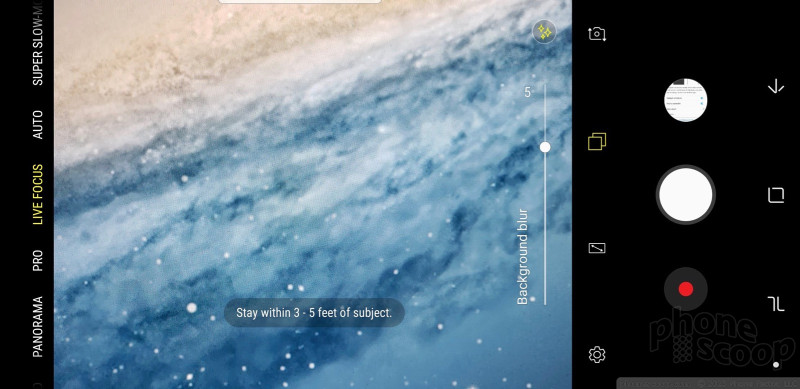






























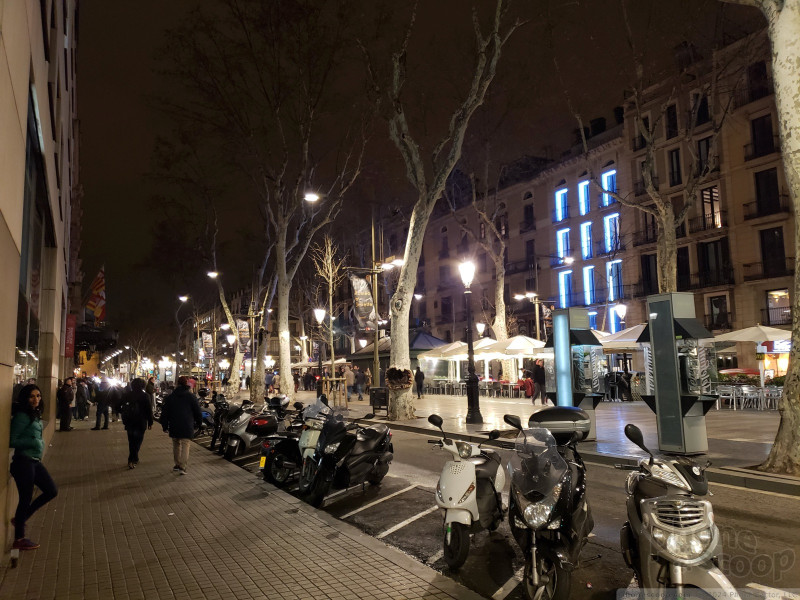

























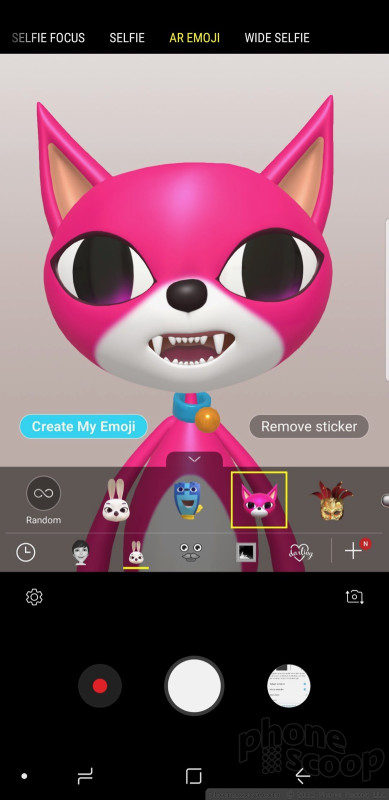









 Review: Invisible Shield Glass Curve Elite for Samsung Galaxy S9+
Review: Invisible Shield Glass Curve Elite for Samsung Galaxy S9+
 Review: Tech21 Evo Tactical Case for the Samsung Galaxy S9+
Review: Tech21 Evo Tactical Case for the Samsung Galaxy S9+
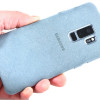 Review: Alcantara Case for Samsung Galaxy S9+
Review: Alcantara Case for Samsung Galaxy S9+
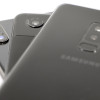 Smartphone Camera Shoot-Out: iPhone X, Pixel 2 XL, Galaxy S9+
Smartphone Camera Shoot-Out: iPhone X, Pixel 2 XL, Galaxy S9+
 Best of MWC 2018
Best of MWC 2018
 Samsung Galaxy S9+
Samsung Galaxy S9+









